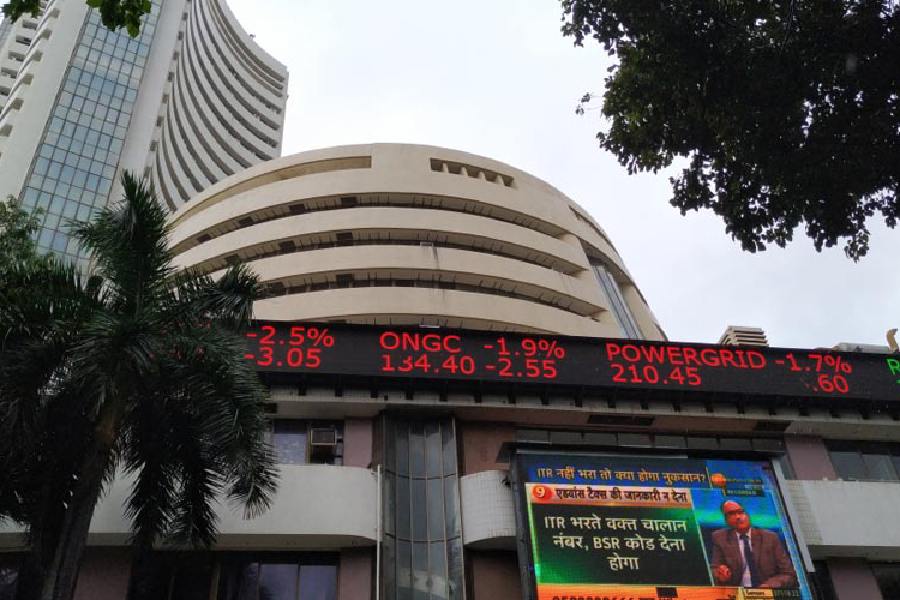
By K R Sudhaman
Government statistics released this week paint a rosy picture of the Indian economy with GDP growth clocking 7.6 per cent in the second quarter of this financial year 2023-24 on the back of strong manufacturing sector. This also strengthens India’s position as the fastest growing major economy, a position held by China for a couple of decades. The economy had grown 7.8 per cent in the first quarter of this financial year. But the next two quarters are expected to have slower growth as the full-year projections remain at 6.5 per cent for 2023-24.
It is not only GDP growth, the upswing was witnessed in core sector output, which jumped 12.1 per cent in October this year indicating strong revival of infrastructure development and economic activity as a whole. Coupled with this, there is sustained growth of tax mop-up, which has helped in keeping the fiscal deficit under check at 45 per cent of FY24 budget estimate during April-October. These are welcome developments in the economy. Along with this retail inflation for industrial workers eased to 4.8 per cent in October due to lower prices of certain food items. This meant more money available for consumption expenditure.
Crisil chief economist Dharmakirti Joshi said after a strong growth of 7.8 per cent in the first quarter, the second quarter too surprised on the upside with 7.6 per cent growth. This takes the first half GDP growth to a 7.7 per cent. However, “we still expect growth to slow in the second half due to deepening global slowdown, the lagged impact of domestic rate hikes manifesting fully through the second half of this fiscal, and erratic weather and an El Nino event creating some downside to agricultural growth prospects. The advance estimates from ministry of agriculture peg kharif production at 4.6 per cent lower than last year,” he said.
But there is a worrying factor in the economy, that is, indebtedness of states. This is expected to remain high at 31-32 per cent this fiscal. It is expected to be at an elevated level because of higher capital outlays and moderate growth of states. According to Crisil, the aggregate indebtedness of states, measured as debt to gross state domestic product, is expected remain high with overall borrowings, including guarantees, likely to rise by 9 per cent to over Rs 87 lakh crore.
States are borrowing more to expand capital outlays, besides meeting high committed revenue expenditure related to salaries, pension and interest costs. This along with modest single-digit revenue growth will keep debt of states high. During pre-pandemic years, the debt to GSDP ratio was at 28-29 per cent.
The aggregate gross fiscal deficit (GFD) as a ratio of GSDP is expected to remain at 2.5 per cent, which is within the Fiscal Responsibility and Budget Management Act norm of 3 per cent, according to a Crisil rating study for the top 18 states, which account for 90 per cent of aggregate GSDP. After a small revenue surplus in fiscal 2022, states slipped into deficit in fiscal 2023, as overall revenues grew at a modest 8 per cent, while revenue expenditure rose faster at 11 per cent on-year. While the overall revenue of states is expected to rise 6-8 per cent, the revenue expenditure is set to increase 8-10 per cent, driven by higher committed expenditure and social welfare expenses.
“The revenue deficit will inch up to 0.5 per cent of GSDP this fiscal from 0.3 per cent last fiscal. This, coupled with the 18-20 per cent on-year increase in capital outlays of states on key infrastructure segments, such as water supply and sanitation, urban development, roads and irrigation will necessitate higher borrowing this fiscal, too,” senior director, Crisil Ratings, Anuj Sethi, said.
Crisil Ratings director Aditya Jhaver, went on to add that “overall balance sheet borrowings such as guarantees to the power sector and irrigation entities, are likely to go up by Rs 7.5 lakh crore this fiscal and cross Rs 87 lakh crore keeping states’ indebtedness high at 31-32 per cent, similar to fiscal 2023. Already, borrowings through state development loans, comprising 65 per cent of the overall borrowings for states rose 28.5 per cent on-year between April and November 2023.”
All these are pointers to the fact that fiscal health of states is not all that good and that economic reforms have not percolated down to states fully. The union government needs to ponder over this issue and the 16th finance commission, could look into this aspect as well. The 16th finance commission is tasked to evolve devolution formula to states from the central pool of taxes for a five-year period, beginning 2026.
But the Indian economy as a whole is expected to continue its strong growth trajectory, with real GDP growth in FY24 projected to be higher than long term average, according to a report by Client Associates, Gurugram based wealth management firm. (IPA Service)
The post Growth Data For This Fiscal’s Second Quarter Has Many Encouraging Signs first appeared on Latest India news, analysis and reports on IPA Newspack.


